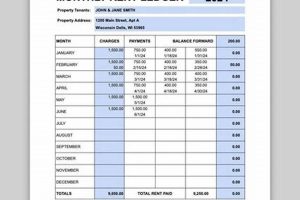Extended stay pricing models in the hospitality industry offer alternatives to traditional nightly charges. These models often provide substantial discounts compared to booking a room for 30 consecutive nights at the standard rate. Typically, these arrangements cater to travelers needing accommodation for an extended duration, such as project workers, relocating families, or those experiencing temporary housing displacement. An example would be a furnished apartment rental with weekly or monthly billing that includes utilities and amenities.
The availability of such pricing structures benefits both the guest and the hotelier. Guests can secure predictable housing costs and often access amenities like kitchenettes and laundry facilities, contributing to a more comfortable long-term stay. For hotels, these longer stays contribute to consistent occupancy and streamlined operations, reducing the administrative overhead associated with frequent guest turnover. Historically, extended stay options were limited, primarily consisting of apartment hotels or boarding houses. The modern market has expanded considerably, with many hotels now offering specific long-term stay programs or partnering with specialized extended-stay properties.
This article will further explore the nuances of pricing for extended stays, considering factors such as location, seasonality, available amenities, and the various accommodation types best suited for longer-term travelers. Additional topics covered will include tips for negotiating favorable rates and resources for finding suitable extended stay properties.
Tips for Securing Favorable Extended Stay Rates
Securing cost-effective accommodations for extended durations requires careful planning and consideration of several key factors. The following tips offer guidance for navigating the complexities of long-term hotel stays.
Tip 1: Book in Advance: Advanced booking, particularly during peak season or in high-demand locations, often unlocks preferential pricing and a wider selection of available properties.
Tip 2: Consider Location: Prices can fluctuate significantly based on location. Exploring options slightly outside city centers or in less tourist-saturated areas may yield substantial savings.
Tip 3: Evaluate Amenities: Assess which amenities are essential. Opting for properties offering only necessary amenities can contribute to lower overall costs.
Tip 4: Negotiate Directly: Contacting hotels directly to discuss extended stay rates can sometimes lead to discounted offers not available through online booking platforms.
Tip 5: Explore Alternative Accommodation Types: Consider apartment hotels, extended-stay suites, or furnished apartment rentals, which often provide more competitive pricing structures for longer stays.
Tip 6: Leverage Corporate or Membership Discounts: Affiliation with specific organizations or loyalty programs can often unlock discounted rates.
Tip 7: Travel During the Off-Season: Traveling during less popular times can significantly reduce accommodation costs.
By employing these strategies, travelers can significantly reduce accommodation expenses while maintaining comfortable and convenient living arrangements during extended trips.
These cost-saving measures empower travelers to allocate their resources more effectively, enhancing the overall travel experience. The following section will provide concluding remarks and summarize key takeaways for securing optimal extended stay rates.
1. Average Nightly Rate
The average nightly rate serves as a foundational element in calculating and understanding extended stay pricing. While rarely the final price for month-long stays, it provides a crucial starting point for negotiations and comparisons. Understanding its role is essential for effectively evaluating the overall cost of long-term accommodations.
- Baseline for Discounts:
The average nightly rate establishes the baseline from which discounts for extended stays are calculated. These discounts can vary significantly based on factors such as the length of stay, the property’s policies, and seasonal demand. Understanding the average nightly rate allows potential guests to assess the value proposition of offered discounts and compare options effectively.
- Indicator of Property Pricing:
The average nightly rate reflects the general pricing strategy of a property. Higher average nightly rates often indicate higher-end amenities, prime locations, or specialized services. This information helps travelers align their budget with their desired level of accommodation and anticipate overall monthly costs.
- Comparison Tool:
Average nightly rates allow for comparisons between different properties and accommodation types. By analyzing these rates, travelers can identify potentially more cost-effective options for extended stays, such as apartment hotels or extended-stay suites, which might offer lower average nightly rates compared to traditional hotels.
- Negotiation Starting Point:
When negotiating directly with hotels for extended stays, the average nightly rate serves as a reference point. Guests can leverage this information to discuss potential discounts and arrive at a mutually agreeable monthly rate. Knowledge of this rate strengthens the guest’s negotiating position.
In conclusion, while not directly equivalent to the monthly rate, the average nightly rate offers invaluable insight into the cost structure of extended stays. By considering this rate in conjunction with potential discounts, property characteristics, and market dynamics, travelers can make informed decisions and secure optimal pricing for their long-term accommodation needs.
2. Discounts for Extended Stays
Discounts for extended stays represent a critical link between nightly rates and the overall cost of hotel rates for a month. These discounts function as a primary mechanism for reducing the financial burden of long-term accommodations, making extended stays more accessible and appealing to travelers. The relationship is directly correlated: the magnitude of the discount directly impacts the final monthly cost. For example, a 15% discount on a $100 nightly rate translates to a substantial saving over a month-long stay compared to a 5% discount. This incentivizes longer stays and benefits both the guest and the hotel. Guests secure more affordable accommodations, and hotels benefit from higher occupancy rates and reduced administrative overhead associated with frequent guest turnover.
Several factors influence the availability and size of these discounts. These factors include the hotel’s occupancy rate, the time of year (off-season often yields higher discounts), the length of the stay, and any negotiated agreements. Hotels often tier their discounts based on the duration of the stay, offering progressively larger discounts for longer stays. For instance, a hotel might offer a 5% discount for a week-long stay, a 10% discount for two weeks, and a 15% discount for a month. In addition, some hotels offer negotiated rates for corporate clients or members of loyalty programs, further influencing the final monthly cost. Understanding these discount structures empowers travelers to optimize their budgets and potentially negotiate more favorable terms.
In conclusion, the availability and structure of discounts for extended stays play a pivotal role in determining the overall cost of monthly hotel rates. Awareness of these dynamics, combined with strategic planning and negotiation, enables travelers to secure cost-effective accommodations for extended periods. This understanding is fundamental for managing travel budgets and maximizing the value of long-term stays. Further exploration of specific hotel policies and prevailing market conditions can provide additional insights for informed decision-making.
3. Lease Agreements (if applicable)
Lease agreements, while less common than standard nightly or weekly bookings, represent a distinct approach to extended hotel stays. Their presence significantly alters the nature of the guest-hotel relationship and impacts the determination of monthly rates. Instead of a series of consecutive nightly reservations, a lease agreement establishes a contractual tenancy for a fixed period, typically a month or longer. This shift introduces legal and financial implications distinct from shorter-term stays.
A key distinction lies in the calculation of monthly costs. Under a lease agreement, the rate is often a pre-negotiated fixed sum for the entire lease term, independent of fluctuating daily or weekly rates. This provides budgetary predictability for the guest. Furthermore, lease agreements often encompass inclusions beyond standard hotel services, such as utilities, internet access, and parking, streamlining billing and simplifying cost management. For example, a lease agreement might include a fixed monthly rate covering rent, utilities, and basic cable television, offering a consolidated cost structure compared to separate billing for individual services. This bundled approach simplifies budgeting and eliminates potential fluctuations in utility costs.
However, lease agreements also introduce specific considerations. Terms and conditions regarding early termination, damage liability, and renewal options require careful review. For instance, a lease might stipulate penalties for early termination, limiting flexibility. Furthermore, while lease agreements can offer cost advantages, they may not always incorporate the same level of housekeeping or concierge services provided with traditional hotel stays. This distinction requires careful evaluation based on individual needs and priorities. In summary, lease agreements introduce a structured, predictable pricing model for extended hotel stays, differing significantly from standard booking procedures. Understanding the nuances of these agreements, including potential benefits and drawbacks, is crucial for informed decision-making and effective cost management during extended travel or relocation.
4. Included Amenities and Services
The correlation between included amenities and services and monthly hotel rates constitutes a significant factor in evaluating long-term accommodation costs. Amenities and services directly influence the overall value proposition and contribute to the final pricing structure. This relationship exhibits a spectrum: more comprehensive amenity packages typically correlate with higher monthly rates. For instance, a hotel offering a full-service spa, multiple dining options, and extensive conference facilities will likely command a higher monthly rate compared to a budget hotel offering basic amenities. Conversely, properties with limited amenities or services tend to offer lower monthly rates. Understanding this interplay is crucial for optimizing value and aligning accommodation choices with budgetary constraints and individual needs.
Practical examples illustrate this principle. An extended-stay hotel catering to business travelers might include high-speed internet access, a business center, and airport shuttle services in its monthly rate, reflecting the specific needs of its target clientele. In contrast, a resort property might emphasize recreational amenities, such as swimming pools, fitness centers, and on-site restaurants, justifying a potentially higher monthly rate with the breadth of leisure options. Furthermore, the inclusion of utilities, housekeeping services, and laundry facilities within a monthly rate significantly impacts the overall cost and convenience for long-term guests. Careful consideration of these bundled services allows for comprehensive cost comparisons and informed decision-making.
Navigating this dynamic requires a strategic assessment of individual needs and priorities. Identifying essential versus non-essential amenities enables informed choices and maximizes value within budgetary parameters. Unnecessary amenities add to the overall cost without contributing practical benefits. Prioritizing essential features and services while forgoing superfluous options ensures optimal resource allocation and cost-effectiveness. Understanding the interplay between included amenities and services and their impact on monthly hotel rates empowers travelers to make informed decisions, optimizing both comfort and budget during extended stays.
5. Location and its influence on pricing
Location exerts a substantial influence on extended stay hotel pricing. This influence stems from several interconnected factors, including proximity to demand generators, local market dynamics, and accessibility. Properties situated in high-demand areas, such as city centers, financial districts, or popular tourist destinations, typically command higher monthly rates due to increased competition and convenience. Conversely, locations further from these hubs often offer more competitive pricing due to lower demand. This geographic pricing disparity reflects the fundamental economic principles of supply and demand. For instance, a hotel near a major convention center will likely have higher rates than a comparable hotel in a suburban area.
Accessibility further complicates this relationship. Properties conveniently located near transportation hubs, major highways, or airports often command premium rates due to enhanced accessibility and convenience for travelers. This added value translates into higher pricing. Furthermore, the local market dynamics, including the presence of competing hotels and the overall cost of living in the area, contribute to pricing variations. Areas with a high concentration of hotels and a high cost of living often exhibit higher extended stay rates. Conversely, areas with fewer hotels and a lower cost of living may offer more budget-friendly options. For example, hotels in a bustling metropolis with limited accommodation options will likely charge higher rates compared to those in a smaller city with ample availability.
Understanding the influence of location on extended stay pricing is crucial for effective budgeting and accommodation selection. Analyzing location-specific factors, such as proximity to points of interest, transportation access, and local market conditions, empowers travelers to make informed decisions aligned with their budgetary constraints and logistical needs. Recognizing this interplay between location and pricing enables travelers to optimize their accommodation strategy, balancing convenience and cost-effectiveness. This awareness is essential for maximizing the value of extended stays while minimizing unnecessary expenses.
6. Seasonal Price Fluctuations
Seasonal price fluctuations represent a significant dynamic influencing monthly hotel rates. This variability stems from the cyclical nature of travel demand, influenced by factors such as holidays, school breaks, and major events. Peak seasons, characterized by heightened demand, typically result in elevated monthly rates. Conversely, periods of lower demand, often coinciding with the off-season, generally yield more affordable monthly rates. This fluctuation reflects the fundamental principles of supply and demand within the hospitality industry. For instance, a beach resort might charge premium rates during the summer months and offer significantly lower rates during the winter. Similarly, hotels in major cities might experience price surges during large conferences or festivals.
The impact of seasonal fluctuations on monthly hotel rates is substantial. Understanding these patterns is crucial for budget optimization and strategic travel planning. Booking accommodations during the shoulder seasonsthe periods immediately before and after peak seasonoften presents an opportunity to secure favorable rates while still enjoying pleasant weather and fewer crowds. Furthermore, awareness of local events and holidays in the destination city allows travelers to anticipate potential price surges and adjust travel dates accordingly. For example, booking a hotel in a ski resort town during the fall, before the ski season begins, could result in considerable cost savings compared to booking during the peak winter months. Similarly, avoiding major city destinations during large-scale events can help mitigate inflated accommodation costs.
In conclusion, navigating seasonal price fluctuations requires proactive planning and informed decision-making. Analyzing historical pricing trends, understanding local event calendars, and considering flexible travel dates empowers travelers to mitigate the impact of seasonal variability on monthly hotel rates. This awareness is essential for optimizing travel budgets and securing cost-effective accommodations for extended stays, ultimately enhancing the overall travel experience. Integrating this understanding into the broader context of accommodation planning allows travelers to balance cost considerations with desired travel experiences and logistical requirements.
Frequently Asked Questions about Extended Hotel Stays
This FAQ section addresses common inquiries regarding extended hotel stays, providing clarity on pricing structures, booking procedures, and key considerations for long-term accommodations.
Question 1: How do monthly hotel rates compare to booking individual nights for a month?
Monthly rates typically offer significant cost savings compared to booking individual nights for an extended period. Hotels incentivize longer stays with discounted monthly rates to ensure consistent occupancy.
Question 2: What factors influence monthly hotel rate variations?
Several factors influence monthly rates: location, seasonality, demand, included amenities, and the specific hotel’s pricing policies. Researching these factors helps determine reasonable pricing expectations for a particular location and time of year.
Question 3: How can one find the best monthly hotel rates?
Utilizing online travel agencies specializing in extended stays, contacting hotels directly to inquire about long-term rates, and considering alternative accommodation types like apartment hotels often yield the most competitive pricing.
Question 4: Are there any disadvantages to booking an extended hotel stay?
While extended stays offer numerous advantages, potential disadvantages include limited housekeeping services in some cases, less flexibility compared to shorter bookings, and potential restrictions on amenities access depending on the hotel’s policy.
Question 5: What amenities are typically included in monthly hotel rates?
Inclusions vary widely depending on the hotel and the specific rate offered. Common inclusions might encompass utilities, internet access, parking, and basic housekeeping services. Confirming these inclusions prior to booking is essential.
Question 6: How far in advance should one book an extended hotel stay?
Booking several weeks or even months in advance, especially during peak season or in high-demand locations, is generally recommended. Advance booking enhances the likelihood of securing preferred accommodations and potentially more favorable rates.
Understanding these key aspects of extended hotel stays empowers informed decision-making and facilitates a seamless booking process. Thorough research and proactive planning are essential for securing optimal accommodations and pricing for long-term travel needs.
The next section will offer concluding remarks and summarize the key benefits of extended hotel stays.
Hotel Rates for a Month
This exploration of monthly hotel rates has provided a comprehensive overview of key considerations for extended stays. Factors influencing pricing, including location, seasonality, amenities, and lease agreements, have been examined in detail. Strategies for securing favorable rates, such as advance booking, direct negotiation, and leveraging discounts, have also been addressed. Understanding the interplay of these elements is essential for effective budgeting and informed decision-making when planning long-term accommodations.
The hospitality industry continues evolving to meet the diverse needs of extended-stay travelers. Careful consideration of the factors outlined herein empowers informed choices and facilitates a positive long-term accommodation experience. Proactive planning and strategic decision-making are crucial for optimizing value and comfort during extended travel or relocation.







